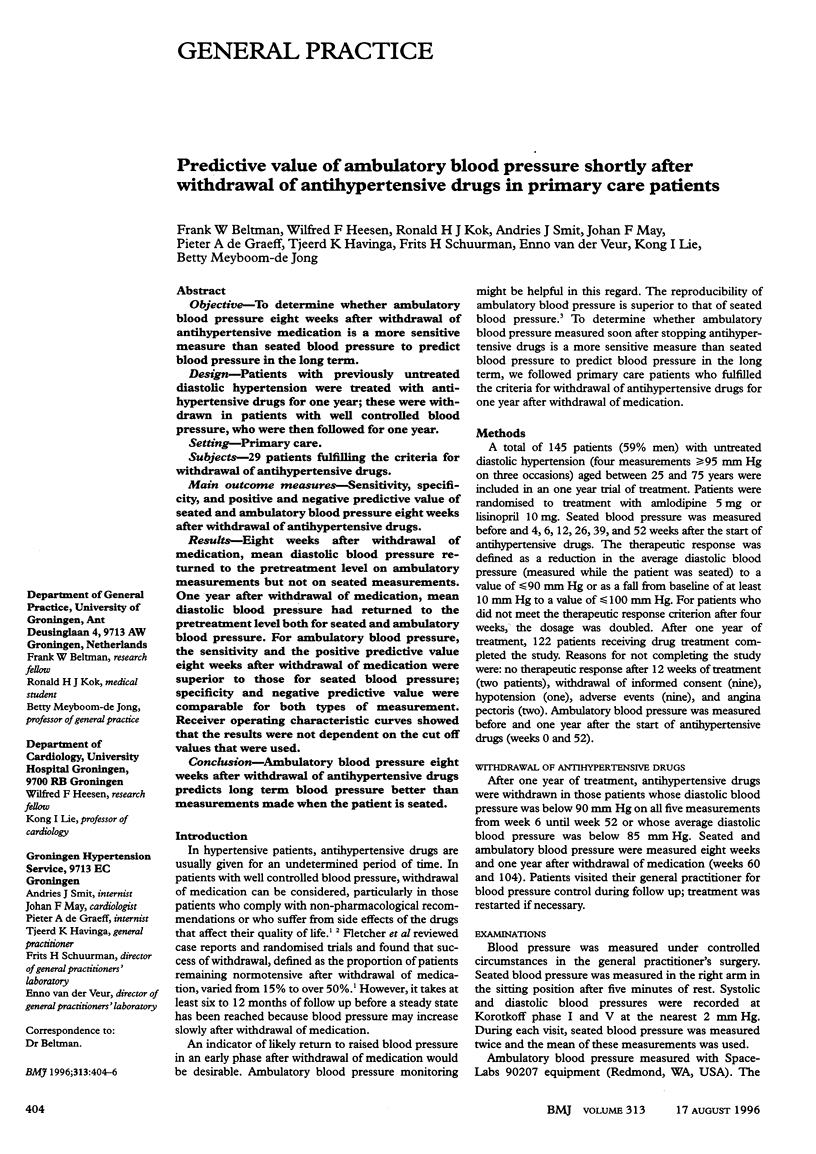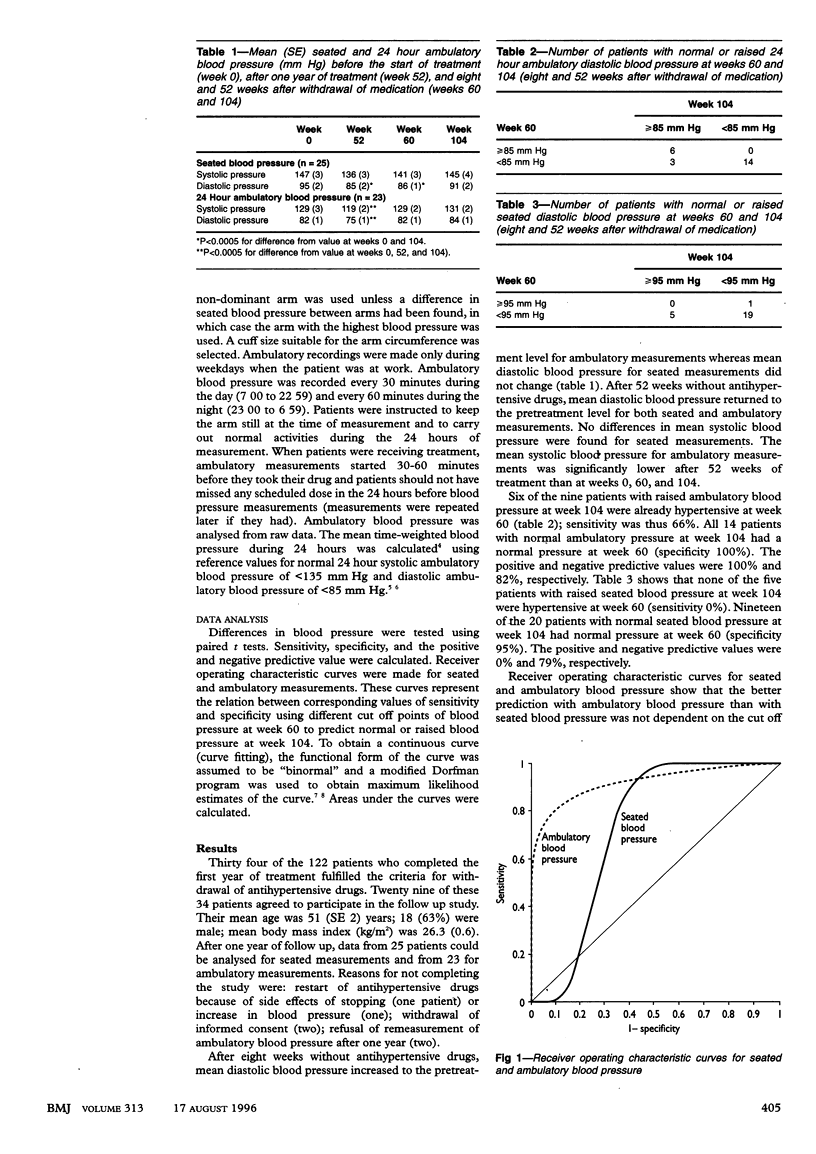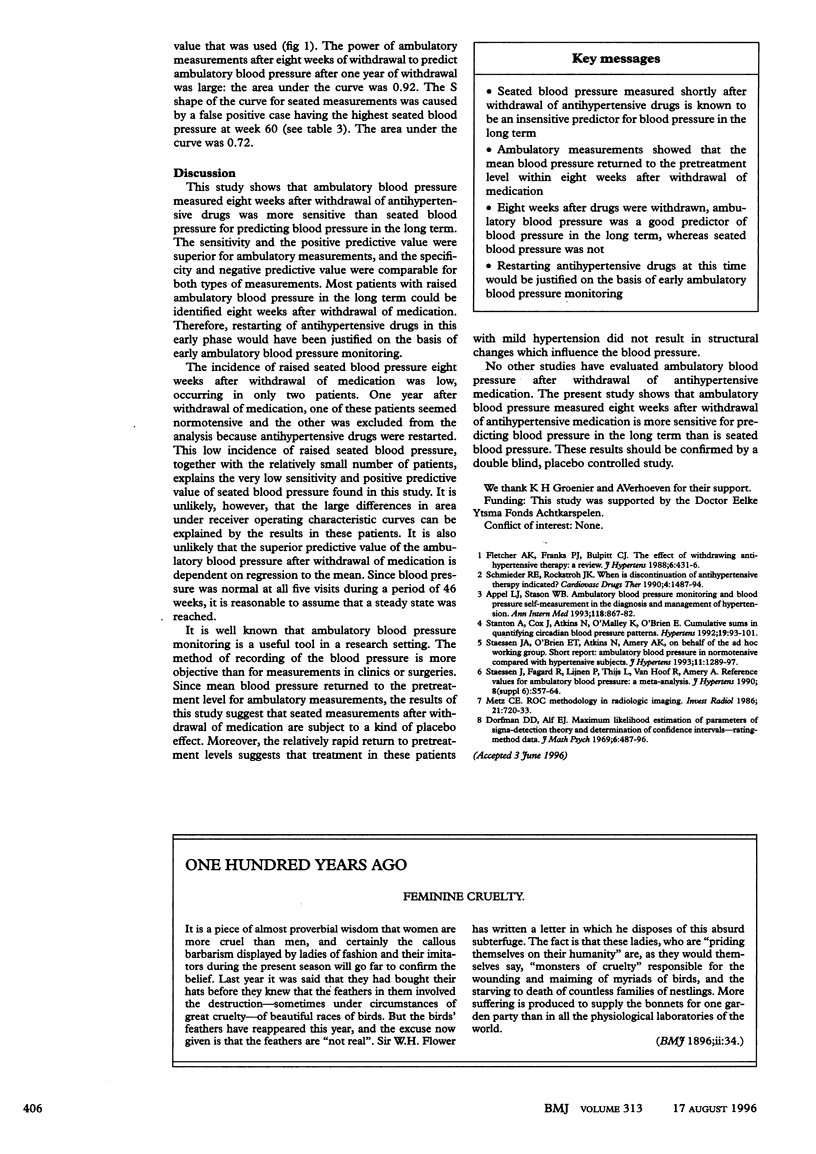Abstract
OBJECTIVE: To determine whether ambulatory blood pressure eight weeks after withdrawal of antihypertensive medication is a more sensitive measure than seated blood pressure to predict blood pressure in the long term. DESIGN: Patients with previously untreated diastolic hypertension were treated with antihypertensive drugs for one year; these were withdrawn in patients with well controlled blood pressure, who were then followed for one year. SETTING: Primary care. SUBJECTS: 29 patients fulfilling the criteria for withdrawal of antihypertensive drugs. MAIN OUTCOME MEASURES: Sensitivity, specificity, and positive and negative predictive value of seated and ambulatory blood pressure eight weeks after withdrawal of antihypertensive drugs. RESULTS: Eight weeks after withdrawal of medication, mean diastolic blood pressure returned to the pretreatment level on ambulatory measurements but not on seated measurements. One year after withdrawal of medication, mean diastolic blood pressure had returned to the pretreatment level both for seated and ambulatory blood pressure. For ambulatory blood pressure, the sensitivity and the positive predictive value eight weeks after withdrawal of medication were superior to those for seated blood pressure; specificity and negative predictive value were comparable for both types of measurement. Receiver operating characteristic curves showed that the results were not dependent on the cut off values that were used. CONCLUSION: Ambulatory blood pressure eight weeks after withdrawal of antihypertensive drugs predicts long term blood pressure better than measurements made when the patient is seated.
Full text
PDF


Selected References
These references are in PubMed. This may not be the complete list of references from this article.
- Appel L. J., Stason W. B. Ambulatory blood pressure monitoring and blood pressure self-measurement in the diagnosis and management of hypertension. Ann Intern Med. 1993 Jun 1;118(11):867–882. doi: 10.7326/0003-4819-118-11-199306010-00008. [DOI] [PubMed] [Google Scholar]
- Fletcher A. E., Franks P. J., Bulpitt C. J. The effect of withdrawing antihypertensive therapy: a review. J Hypertens. 1988 Jun;6(6):431–436. doi: 10.1097/00004872-198806000-00001. [DOI] [PubMed] [Google Scholar]
- Metz C. E. ROC methodology in radiologic imaging. Invest Radiol. 1986 Sep;21(9):720–733. doi: 10.1097/00004424-198609000-00009. [DOI] [PubMed] [Google Scholar]
- Schmieder R. E., Rockstroh J. K. When is discontinuation of antihypertensive therapy indicated? Cardiovasc Drugs Ther. 1990 Dec;4(6):1487–1494. doi: 10.1007/BF02026496. [DOI] [PubMed] [Google Scholar]
- Staessen J. A., O'Brien E. T., Atkins N., Amery A. K. Short report: ambulatory blood pressure in normotensive compared with hypertensive subjects. The Ad-Hoc Working Group. J Hypertens. 1993 Nov;11(11):1289–1297. [PubMed] [Google Scholar]
- Staessen J., Fagard R., Lijnen P., Thijs L., van Hoof R., Amery A. Reference values for ambulatory blood pressure: a meta-analysis. J Hypertens Suppl. 1990 Dec;8(6):S57–S64. [PubMed] [Google Scholar]
- Stanton A., Cox J., Atkins N., O'Malley K., O'Brien E. Cumulative sums in quantifying circadian blood pressure patterns. Hypertension. 1992 Jan;19(1):93–101. doi: 10.1161/01.hyp.19.1.93. [DOI] [PubMed] [Google Scholar]


